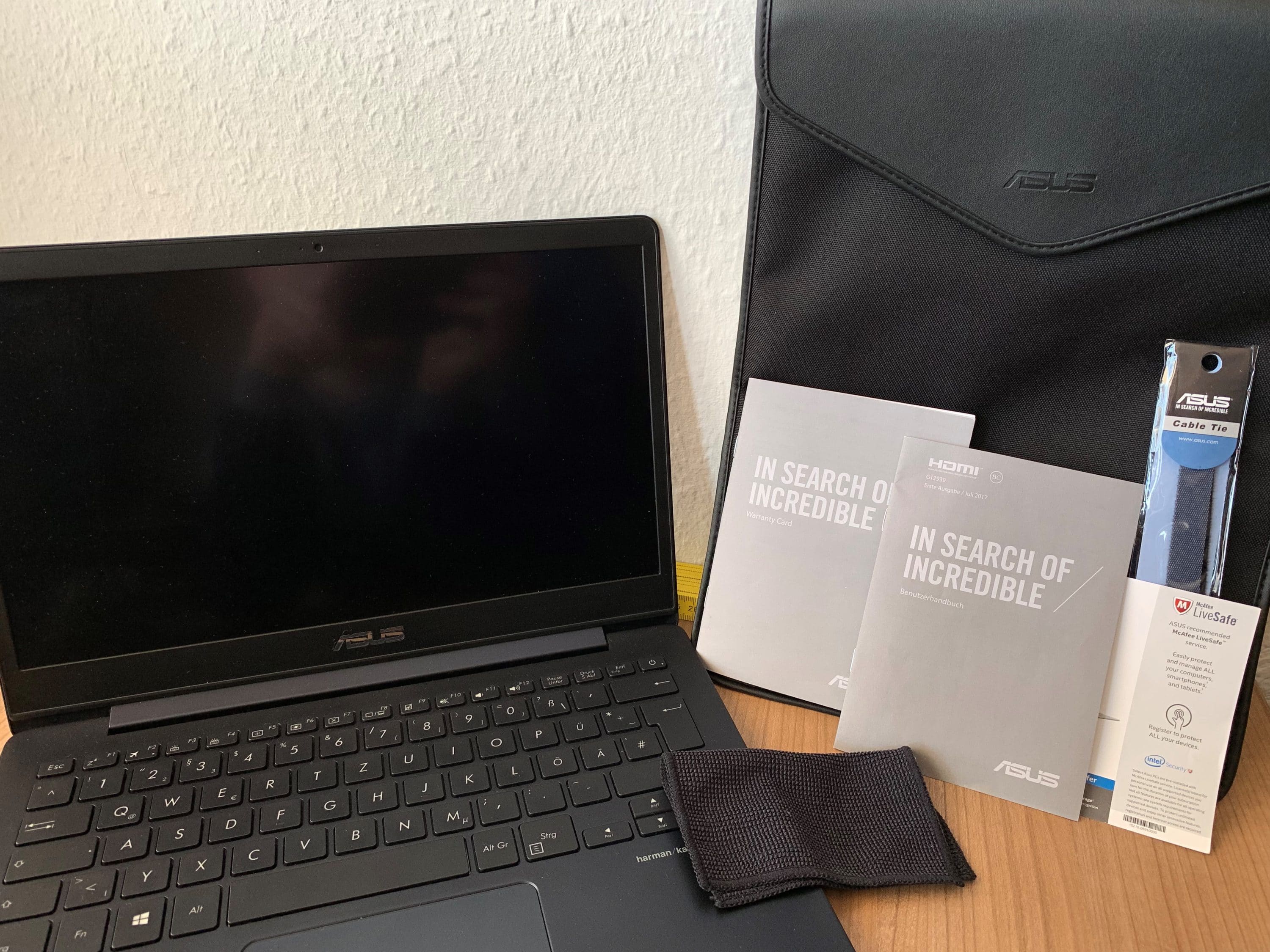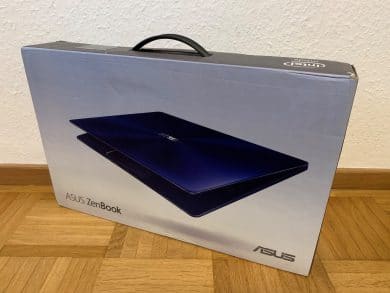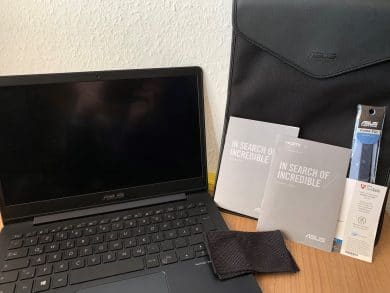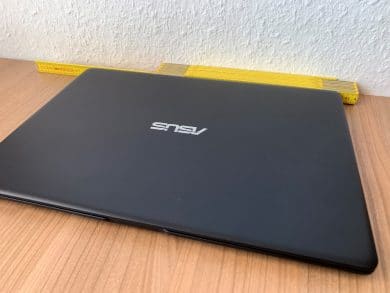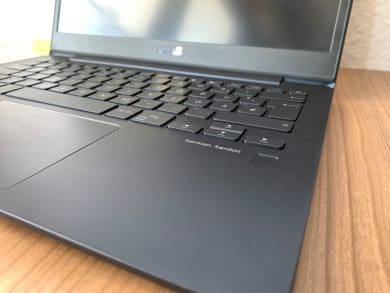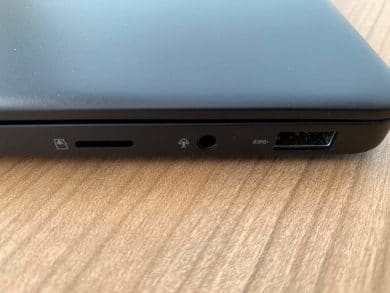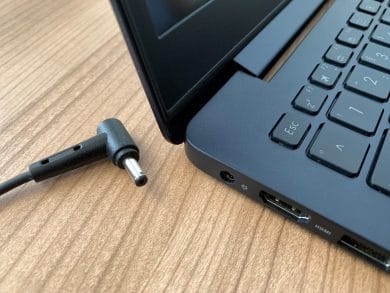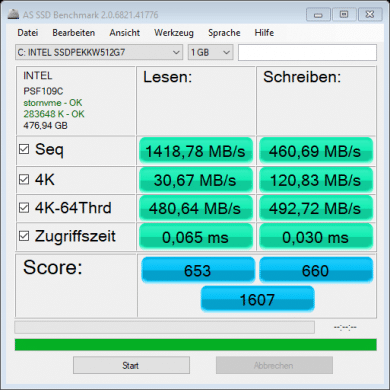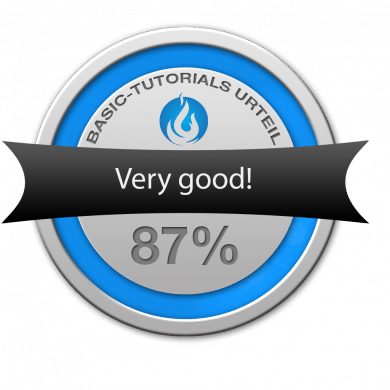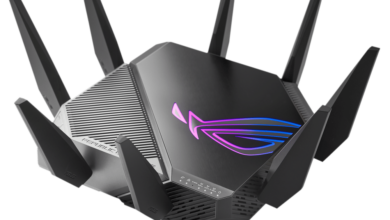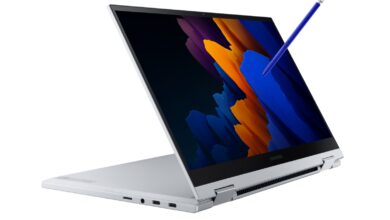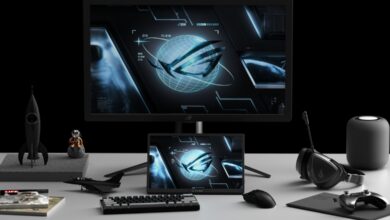At the IFA 2018 ASUS announced an update of the ZenBook notebooks. Meanwhile all models are available in the trade. With the ZenBook 13, ASUS is supposed to offer the perfect mobile companion. The technical data promises a lot: 15 hours battery life, a weight of less than one kilo, current hardware and much more.
But how does the Zenbook perform in practice? Is it really a perfect mobile companion or will compromises be made due to the low weight? We are curious and subject the top model of the ZenBook 13 UX331UAL to an extensive practical test.
Packaging and Accessories
The ZenBook is well packed but inconspicuous.
However, the accessories are more conspicuous. In addition to the power supply and various booklets, cable ties, a cleaning cloth and even a bag are included.
Design and Workmanship
The almost 14 mm thin ZenBook has an aluminium-magnesium alloy and feels valuable. However, fingerprints can quickly be seen on them. At first glance, no workmanship errors are noticeable. However, the low weight is immediately noticeable.
The loudspeakers are mounted on the underside of the laptop. However, this position carries the risk that the speakers may be covered when the laptop is placed on the thighs. Nevertheless, the sound in the test for laptop speakers was quite good and only tinny on a very high level.
If you open the ZenBook you can see the keyboard, the fingerprint sensor and the touchpad next to the screen. So that the keyboard does not press on the screen, the keyboard is minimally recessed. The fingerprint sensor is slightly deeper on one side. In practice, however, this is always reliable and very fast.
The touchpad has a pleasant size and works quite well. But the ZenBook’s touchpad can’t match the size and feel of a MacBook. The keyboard, on the other hand, feels very good. It is fun to write with these longer texts.
The keyboard has a multi-level illumination. In the tested UX331UAL, however, it was darker in the middle of the keyboard than on the outside. The keyboard illumination switches off after a short time when not in use and is automatically switched on again when in use.

Display
The ZenBook’s 13.3-inch full HD display is matt and has good viewing angle stability thanks to the IPS panel. The colors look good and there are no pixel errors or problems with the illumination recognizable.
HDR playback can be activated via the settings in Windows 10. However, no difference was visible in test videos.
The only criticism of the display is the brightness setting. After the initial setup, this could only be changed for a short time. After each BIOS and graphics card driver update, this was temporarily adjustable again. Only the update of all drivers could finally solve the problem.
Equipment and software
The ZenBook offers some connections. In addition to the proprietary power connector, there is an HDMI connector, USB 3.1 Type A and Type C on the left side. On the right side there is another USB 3.1 type A port, a headphone port and a microSD port. The ZenBook cannot be charged via the USB type C port.
The ZenBook tested here has an Intel Core i7-8550U, soldered 16 GB LPDDR3-2133 RAM and a 512 GB M.2 SSD. In other variants a barely slower i5, 8 GB RAM and a 256 GB SSD are installed. Above the screen there is a webcam. The quality of this and the low resolution of 0.3 MP, however, leave much to be desired. Otherwise the installed hardware is class typical.
The pre-installed Windows 10 version largely dispenses with additional software. However, the antivirus program McAfee is installed. This caused a continuously high load on all CPU cores in the test even after one day and thus also an increased battery consumption. Only after the uninstallation the problem could be solved.
Performance: Practical test
The ZenBook has enough power for everyday tasks. But how does the notebook actually beat and how much does the CPU trot? To find out all this in our test, we use Cinebench R15 and a benchmark in the game CS:GO.

In both cases, we run the tests several times to find out the actual performance under continuous load. In addition, the tests are run in both normal and quiet modes.
Overview of CPU/GPU test results
| First run | Second run | Third run | |
|---|---|---|---|
| Cinebench (Quiet Mode) | 515 | 456 | 413 (1.8-2 GHz) |
| Cinebench | 555 | 490 | 470 (2.1-2.4 GHz) |
| CS GO (Quiet Mode) | 36.62 | 36.44 | 35.41 |
| CS GO | 48.92 | 47.21 | 45.38 |
Several points stand out during the test. On the one hand the CPU in Cinebench clocks about 10 % lower in Quiet mode than in normal mode. On the other hand it is recognizable that the CPU throttelt. Already in the first run the cycle is clearly reduced. In the third run 80-85% of the performance of the first run is achieved. In Quiet mode the basic clock of the processor cannot be held at all.
If the GPU is required, the CPU/GPU clock rate is hardly reduced even over several runs. What is interesting here is the difference between Quiet and normal mode. In the test, approximately 75% of normal performance was achieved.
The higher performance in normal mode is achieved by an adapted fan characteristic and higher temperature targets. This means, for example, that the GPU in CS:GO reaches 83 instead of 68°C and the fans are significantly louder. But more about that later.
SSD test
Finally, the performance of the SSD must be assessed. The AS SSD benchmark is used for this purpose. The two fan profiles are also taken into account in this test.
In the SSD test, the fan profile seems to have no influence on the performance of the SSD. Some coil beeping was noticeable in the test run during section 4K Reading and 4k-64 Thrd Writing.
Overall, the performance of the Intel SSD can be described as good. In comparison to other SSDs, the speed is between a SATA and a fast M.2 SSD.
Battery life and volume
In order to determine the battery life, the ZenBook was used with approx. 50% screen brightness in everyday tasks. After about 12 hours the laptop had to be recharged. This does not reach the 15 hours advertised, but it is still a good value.
When it comes to volume, a distinction must be made between the two fan profiles. In Quiet mode, the ZenBook is completely silent while surfing and watching videos. Only when the load exceeds 50% does the fan start and is quietly audible. No background noise is audible.
In the normal mode, the picture changes: Especially in the practical test of Cinebench and CS:GO, the fan is clearly audible. Even in normal operation the fan can be heard again and again. It is therefore recommended to use the ZenBook in normal mode only when more power is actually needed.
In the test, the coil beeping was conspicuous with regard to the volume. This was in most cases only noticeable in some very performancelastigen test. However, since this varies from device to device, this cannot be evaluated in general terms.
Conclusion on the ASUS ZenBook 13 UX331UAL
The Asus ZenBook 13 UX331UAL tested here is the perfect mobile companion. Due to the current hardware, the performance is on a class typical level. Despite the low weight, the battery life for the standard user is sufficient for a complete day. If the Quiet mode is selected, the ZenBook is almost continuously inaudible. Only a few small things stand out negatively, like the unbalanced illumination of the keyboard and some problems with the software.
In terms of price, however, you get a very good product. For ca. 800 € the entry-level model with 8 GB Ram and 256 GB memory can be purchased. Alternative laptops with this equipment and a similar battery life usually cost four-digit amounts.
ASUS ZenBook 13 UX331UAL
Design & Workmanship
Display
Features & Software
Performance
Battery Life
Volume
Value for Money
A quiet and light endurance competitor with some weaknesses in detail.
